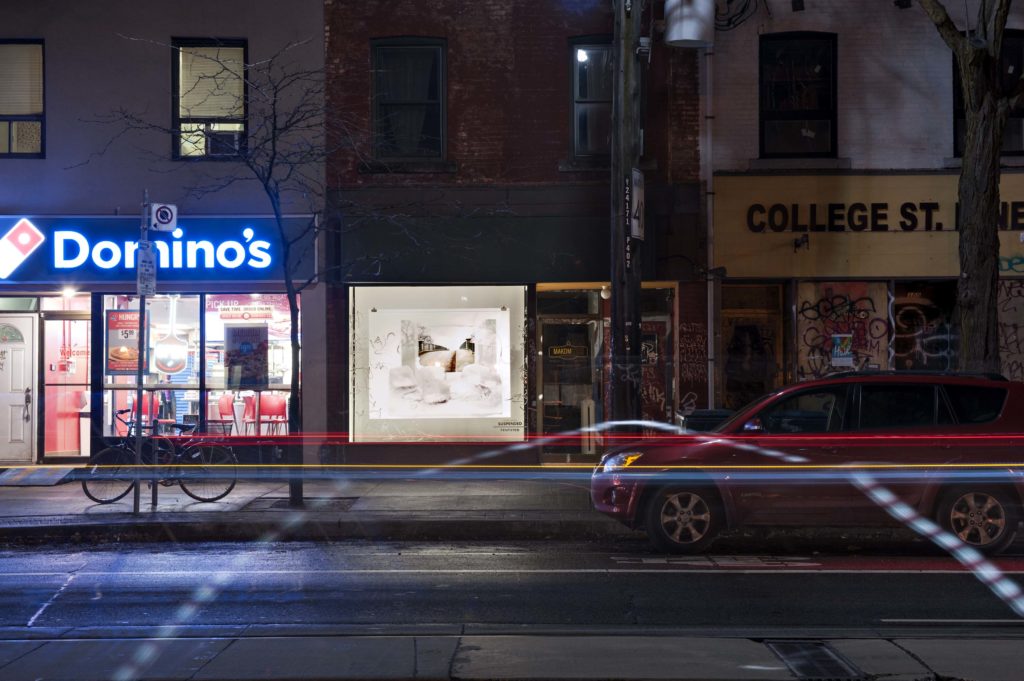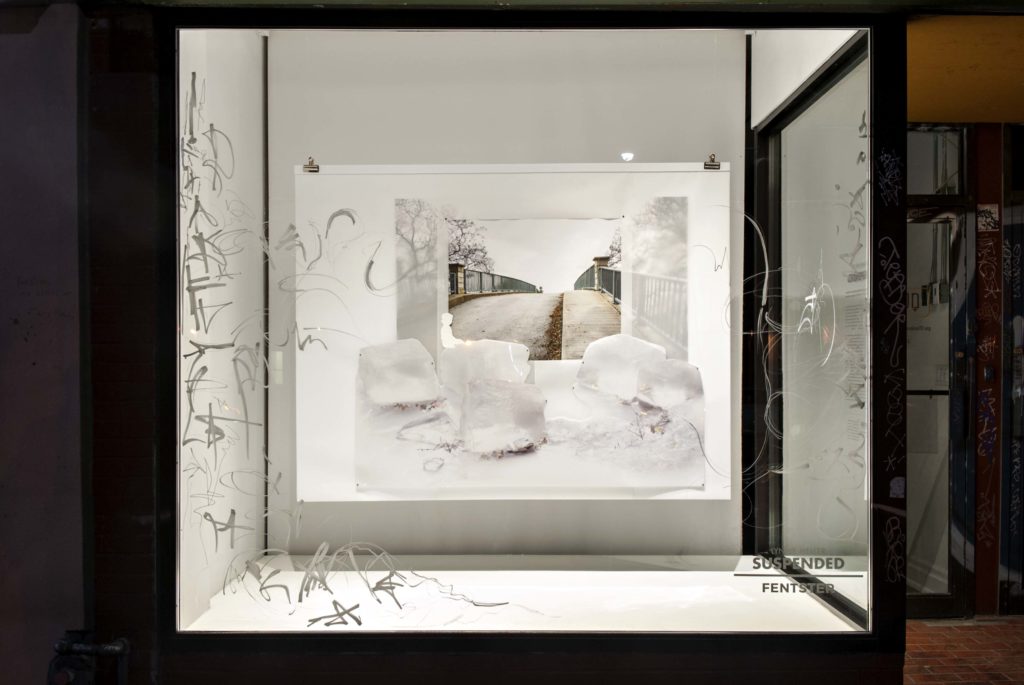Brampton, the suburban city northwest of Toronto, isn’t often brought up in conversations about Jewish life in Canada. It has one synagogue, Har Tikvah, an egalitarian congregation. Chabad of Peel Region sets up an annual menorah at Brampton City Hall, which was lit this year by its surprising new mayor, the reluctantly former Ontario Progressive Conservative party leader Patrick Brown.
At the same time, part of the history of Brampton was reflected in a window in downtown Toronto, as the latest exhibition at the Fentster window gallery at 402 College St. Lynne Heller’s work Suspended, on display until Feb. 12, draws upon the childhood time Heller spent at Camp Naivelt, which dated to 1925 along the Credit River, on land then owned by the Canadian National Railway.

Selling the site to a Jewish organization met with glaringly open resistance. But this camp was all about imagining a new world in which such hostilities didn’t exist.
Reflected in the window installation are Heller’s reflections of a summer place she went with her family starting when she was two in 1958. Kinderland was established as a camp for the younger cottagers of Naivelt, and the tone was overseen by the United Jewish Peoples’ Order, established to further socialist sensibilities: in other words, a place where Communists could have fun, while speaking Yiddish.
Growing up in Toronto’s east-end Danforth neighbourhood, Heller already felt the outsider status of having an Anglo-Protestant mother and a Jewish father, who was detached from his upbringing and wanted to live apart from it all. But that came with feeling different at public school, if only due to taking holidays off that nobody else did, and having ties to a belief system different from most others.
“I’m not Jewish, and yet I’m also not not Jewish,” says Heller. “I don’t have to identify as one or another. You can call it a third way, one that I’m very grateful for, because it’s one that allows for a lot of understanding that I might not have had.”
READ: KISS CONSIDERED FROM A JEWISH POINT OF VIEW
Heller felt a greater connection with the classes she was taken to at the Morris Winchevsky School, founded in 1928, whose secular social justice philosophies took on new resonance through the 1960s. The sensibility prevailed at Camp Naivelt. What’s in the window at Fentster is her attempt to capture displacement and dislocation, inspired by a rare childhood visit there in spring, when the camp was covered in ice floes from the thawing Credit River.
“It was eerie because I didn’t believe that the river could do that,” she says of what she saw as a six-year-old. “I had enough of a sense of nature at that age to find this really surprising. It was a view that stuck with me all those years, even if I didn’t understand what exactly it was.”
Returning to contemplate the terrain, for photos used in Suspended, gave Heller added inspiration for what she wanted to convey. It came with the challenge of setting up an art exhibit in a window; past experiences taught her to not include a video monitor, or too much reflective material, or anything that complicates the view from the sidewalk. (But the exhibit window was also recently strewn with graffiti, which ended up integrated into the presentation.)
Camp Naivelt eventually wound down its Kinderland, and the City of Brampton bought part of the space, establishing it as Eldorado Park. The cottage community has sustained, continuing the legacy of what was once dubbed the “Reds on the Hill,” even if the working-class association is now the stuff of nostalgia: Pete Seeger often visited to perform there, its alumni include Sharon Hampson of Sharon, Lois & Bram. The city designated the camp as a heritage site in 2010.
And yet, it’s an unfamiliar legacy to most who’ll walk by the Fentster window this winter, partly because the political ideals of Camp Naivelt didn’t prove terribly sustainable. Nonetheless, the artist still thinks it’s one in which newer generations can find inspiration.

“It’s pretty exciting for younger people to discover a utopia where socialism and progressive values really flourished,” says Heller. “People would be drawn to it out of fear, longing for a different way of doing things, even if there was also a lot of naiveté back then, before the movement dissolved once people got a greater sense of the implications going on in Russia.
“So, we later learned that a lot of those aspirations weren’t going to be realistic. But a sense that there can be a different way is something beautiful.”









